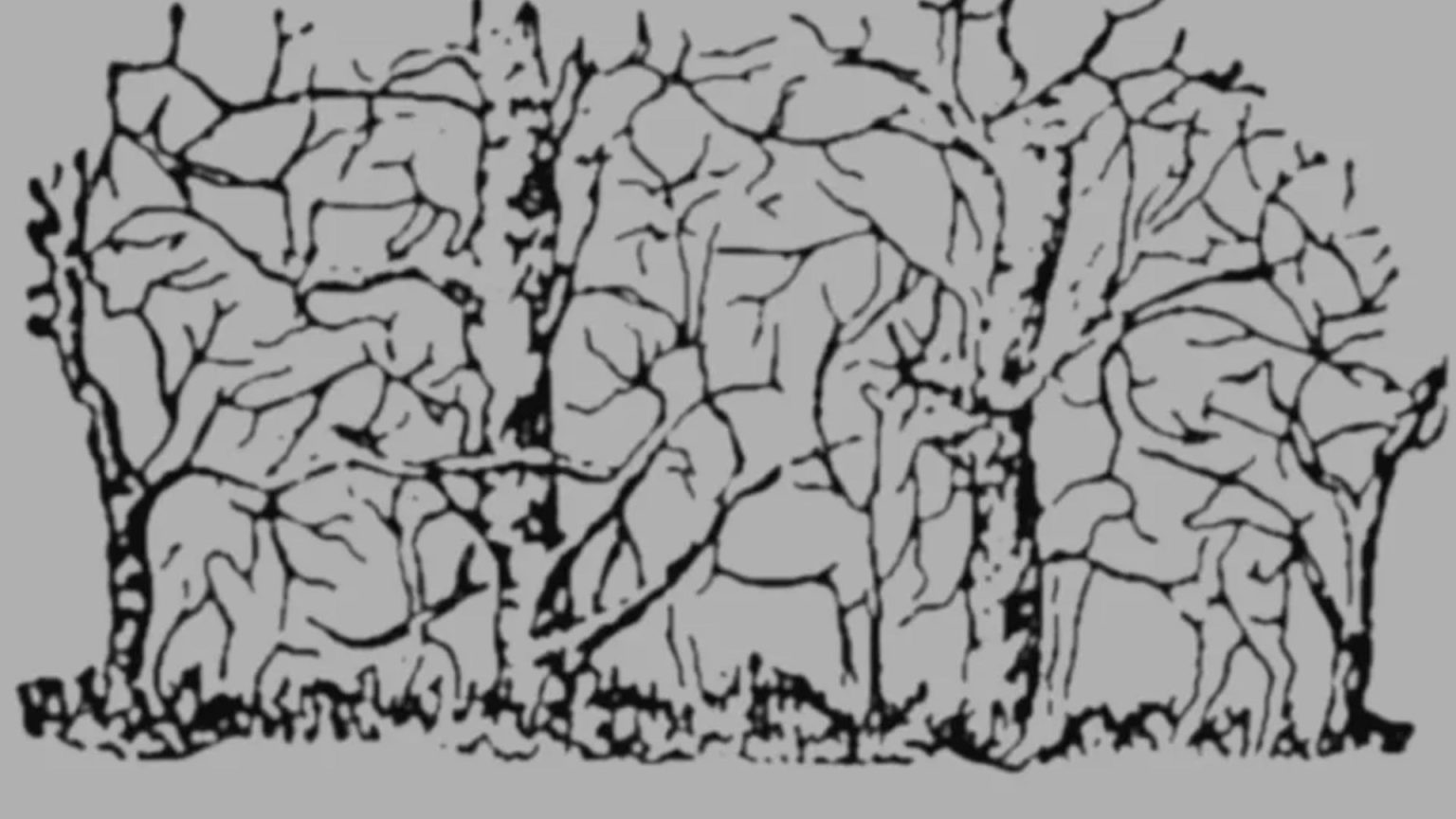This passage presents a visual puzzle, an optical illusion featuring a woodland scene that conceals eight animals within its intricate details. The challenge is to find all eight animals within a short timeframe, ideally under 11 seconds, a feat suggestive of a high IQ. The monochromatic nature of the image and the resemblance of the animals to the branches and trunks of the trees increase the difficulty of the puzzle. The passage provides clues to assist the reader, such as the presence of three animals on the left side, one nestled at the top of the branches, and another flying creature near the top-middle section of the image. A hint regarding the direction the animals are facing further encourages a more thorough examination of the illusion.
The article highlights the cognitive benefits of engaging with optical illusions and brain teasers. These puzzles offer a form of mental exercise that stimulates various brain regions, enhancing cognitive agility, improving problem-solving skills, and boosting memory function. They also foster creativity by encouraging “outside-the-box” thinking and improve focus and attention through the concentration required to solve them. Furthermore, the enjoyable aspect of these puzzles can provide stress relief and relaxation. The passage explains that these activities can stimulate multiple parts of the brain simultaneously, offering a comprehensive mental workout.
Optical illusions, like the one presented, function by challenging our perception and forcing us to look beyond the obvious. Our brains are constantly trying to make sense of the world around us, and illusions exploit the gaps in our perception, creating images that can be interpreted in multiple ways. This forces us to engage in active perception, scrutinizing the image for details that might otherwise be overlooked. The time constraint adds another layer of complexity, increasing the pressure and further challenging our cognitive abilities.
The article also includes a series of additional visual puzzles and challenges. These range from finding five moose within 30 seconds to spotting Santa Claus in a crowded scene within 17 seconds. Another puzzle asks readers to identify the odd one out in a group of images within 12 seconds, while yet another challenges them to find a specific motorhome hidden within a complex picture. These additional puzzles reinforce the article’s focus on cognitive enhancement and provide readers with further opportunities to test their visual acuity and problem-solving skills.
The focus on speed in these challenges emphasizes the importance of quick thinking and rapid information processing. While finding the hidden objects is the primary goal, doing so within the given time limit requires efficient scanning and pattern recognition skills. This mirrors real-world situations where quick decision-making and the ability to process information rapidly are crucial. The varying themes and complexities of the puzzles also contribute to a more well-rounded cognitive workout, engaging different aspects of visual processing and problem-solving.
The passage concludes with the solution to the initial eight-animal optical illusion, providing closure for those who struggled to find all the hidden creatures. This allows readers to compare their own perceptions with the correct answer and identify areas where they might have overlooked subtle details. The inclusion of multiple puzzles within the article provides a varied and engaging experience, encouraging readers to continue challenging themselves and further develop their cognitive abilities. This approach reinforces the core message of the article, promoting the benefits of regular engagement with brain teasers and optical illusions for overall cognitive health and well-being.











